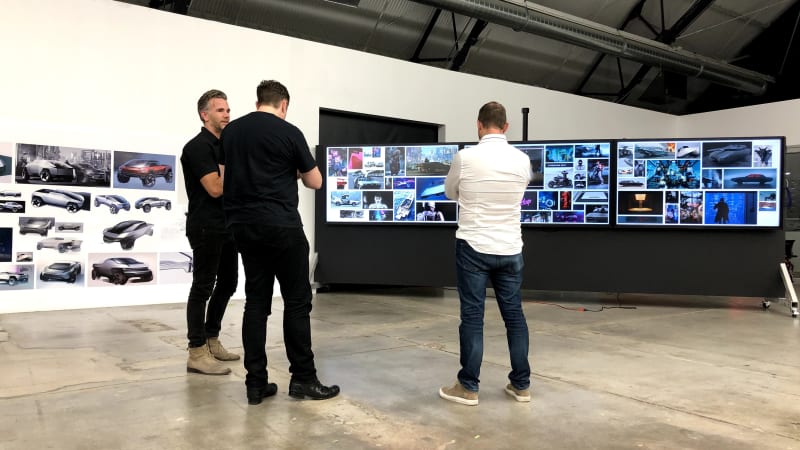Design sketches show what the Tesla Cybertruck could have looked like

The first pre-production Tesla Cybertruck was just built, and it doesn’t look like the controversial design has changed much since the model’s unveiling in 2019. Sketches published on Twitter show some of the other design directions that the brand considered taking.
Louisiana-based author Walter Isaacson posted a picture seemingly taken in Tesla’s design studio to promote his biography of Elon Musk. It shows Franz von Holzhausen (the head of the company’s design department), Musk, and another, unidentified man facing a big board with photos that likely provided inspiration for the pickup’s design. DeLorean’s DMC-12 appears several times; we also spot the Lotus Esprit-based submarine built for a James Bond movie and later purchased by Musk, the Aston Martin Lagonda, boats, motorcycles, and tanks.
Early sketches (shown above) appear to the left of the men, and none feature a design that’s quite as wild as the Cybertruck’s. From the get-go, Tesla set out to create a truck that looks like nothing else on the road; Musk reportedly finds the current crop of pickups “boring.” Many of the sketches depict a truck with an unusual cab-forward design and highly futuristic styling cues, including surprisingly large glass surfaces.
Isaacson wrote that Tesla’s decision to build the Cybertruck using stainless steel had a major influence on the final design.
“The use of stainless steel opened up new possibilities for the look of the truck,” he said. “Stainless steel would favor straight planes and sharp angles. That allowed — and in some ways forced — the design team to explore ideas that were more futuristic, edgier, and even jarring.” This largely explains why many of the trucks sketched by the design team are characterized by angular surfaces and a silver finish.
Cybertruck deliveries are tentatively scheduled to start in the third quarter of 2023 after a long string of delays.







